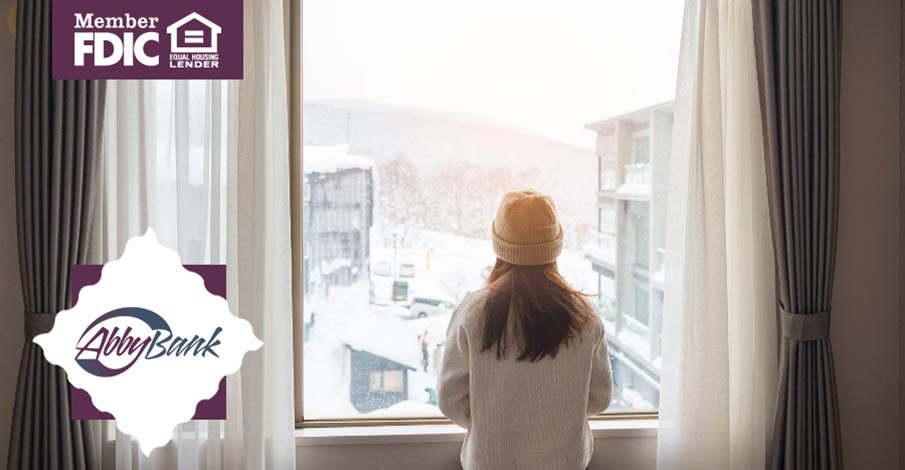Why Your Utility Bill Might Be High (Even Without Big Renovations)
Before diving into strategies, it helps to understand the common culprits behind high heating and energy bills in rented spaces:
- Leaky windows and doors letting cold air sneak in
- Poor insulation or thin walls you can’t control
- Drafts through electrical outlets or baseboards
- Inefficient heating habits—keeping thermostats too high
- Phantom (or standby) power usage from plugged‑in devices
- Old or dirty furnace filters making HVAC systems less efficient
The U.S. Department of Energy recommends renters seal air leaks and optimize heating and cooling as top tips. Some local utilities also provide energy‑saving advice tailored to their service territories. Look up advice for your specific area.
8 Low-Cost Energy-Saving Tips Perfect for Renters
Here are practical things you can do, even without landlord permission, to cut your winter energy use:
1. Use Window Insulation Kits
Clear plastic film kits help trap warmth next to windows. They typically cost under $10 per window and are installed using double-sided tape. This method can significantly reduce drafts.
Start here:
- Best Window Insulation Kits to Seal Drafty Windows - Consumer Reports
- How to Install a Window Insulation Kit (DIY) | Family Handyman
2. Block Door Drafts with “Snakes” or Draft Stoppers
Place a draft stopper at the base of external doors, or around sliding doors, to block cold air. You can DIY one with a rolled towel or buy an inexpensive one.
Here’s how to DIY: DIY Door Draft Stopper - Easy and Effective - AppleGreen Cottage
3. Insulate Outlets and Switch Plates on Cold Walls
Gaps behind light switches or outlets on exterior walls can let cold air in. Use inexpensive foam gaskets or inserts behind these plates.
Here’s how to insulate your electrical outlets: How to Insulate Your Electrical Outlets | Allstate
4. Use Thick, Thermal Curtains or Dual-Layer Drapes
Heavy curtains help trap warmth near windows. At night, draw them closed to reduce heat loss; during sunny afternoons, open them to let natural heat in.
Check out these options: The 7 Best Thermal Curtains - Thermal Curtain Reviews
5. Run Ceiling Fans in Reverse (Clockwise)
Many ceiling fans have a reverse mode. Let the blades spin slowly clockwise to push warm air down from the ceiling — it makes a bigger difference than you might think.
Not sure if your fan reverses? Here’s how to tell: Ceiling Fan Direction Guide
6. Cut Phantom Power with Smart Strips
Plug electronics into smart power strips so all devices turn off when you’re not using them. That prevents wasted standby energy when devices stay plugged in.
Learn how smart power strips work: How Smart Power Strips Work | HowStuffWorks
7. Dress Warm, Bump the Thermostat Down
Wearing layers indoors—sweaters, warm socks—lets you keep your thermostat a few degrees lower without discomfort.
Stay warm outside, too, with this guide: How to Dress in Cold Weather | REI Expert Advice
8. Use Space Heaters Wisely
Space heaters can be effective if used carefully in only the rooms you’re occupying.
- Choose models with tip-over protection and auto shut-off
- Keep them away from curtains or clutter
- Only run them when you’re in the room
Stay safe: Space Heater Safety Tips | Travelers Insurance
Energy Assistance Programs in Wisconsin That Renters Might Qualify For
If you’re renting and struggling with utility costs, Wisconsin offers programs that can help. Use them as safety nets or supplements to your DIY savings.
WHEAP / Home Energy Plus (HE+)
The Wisconsin Home Energy Assistance Program (WHEAP), part of Home Energy Plus, helps eligible households with heating and electric costs. Assistance for non‑heating electric bills may also be available through the Public Benefits fund. WHEAP is available during the heating season (October 1 to May 15) and provides a one-time payment that may not cover full costs.
Even renters are eligible to apply—your landlord’s name or lease info may be needed when applying.
Learn more and apply here: Home Energy+ Application
Weatherization Assistance Programs (WAP / HE+ Weatherization)
Weatherization programs provide energy-efficient upgrades such as sealing air leaks, insulating attics or walls, and improving heating systems. Some renters qualify if building owners allow it. Improvements come at no cost to eligible households, though not everyone qualifies or receives upgrades.
Check with your local WHEAP or human services office to see if your unit is eligible! Learn more about this program here: Weatherization Assistance | CWCAC.ORG
“Savings Pays for Experience” Mindset
When your energy bills go down, that extra money can go toward things you actually enjoy. Instead of impulse buying, you could:
- Save for a weekend in Wausau or Weston
- Gift local event tickets or winter excursions
- Build a “fun fund” in a separate savings account with AbbyBank
Saving toward experiences often brings more satisfaction (and fewer regrets) than splurging on gadgets.
How AbbyBank Can Support You
AbbyBank is more than your financial institution; we’re a local resource committed to helping you make the most of your money:
- Dedicated savings accounts: Create an “Energy Relief” or “Fun Fund” account to track your winter savings
- Automatic transfers: Set up recurring transfers to boost savings without thinking
- Mobile and online tools: Monitor account balances, schedule transfers, and track progress
- Friendly local support: Visit your local branch for budgeting advice or help applying for assistance
- Financial education resources: We can connect you to workshops, planning tools, and advice to help every season go smoother
See How AbbyBank Can Help You Save This Season
When and How to Get Started
Ready to take action? Here’s how to put these ideas into motion:
- Begin in early November—seal windows, order draft stoppers, and apply for WHEAP if eligible
- Track your utility bills monthly to spot what’s working (or not)
- Use any savings from energy bills to build up a cushion for January or February when bills tend to spike
- Request your landlord’s cooperation—even small changes (e.g. sealing gaps) benefit both parties
Save While Staying Warm This Season
Just because you’re renting doesn’t mean you’re powerless against high heating bills. Even small, inexpensive tweaks, like plugging leaks, using window kits, or adjusting your thermostat, can really add up.
When combined with available state assistance like WHEAP or weatherization, these changes can make a real difference in comfort and savings.
AbbyBank is here to help you turn those savings into smarter planning, better budgeting, and memorable experiences. Let’s make this winter a season of comfort, not regret.





